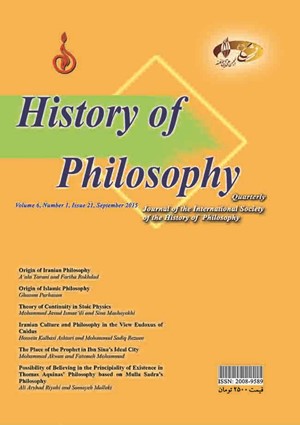Theory of Continuity in Stoic Physics
Subject Areas : Philosophical thoughts in ancient IranMohammad Javad Esmaeili 1 , Sina Masheyekhi 2
1 -
2 -
Keywords: Stoic physics theory of continuity pneuma tonos hexis Islamic philosophy,
Abstract :
This paper investigates the theory of continuity in Stoic physics based on some concepts such as pneuma (the soul), hexis (disposition), and tonos (tension) and refers to its consequences. Moreover, it demonstrates that Stoic philosophers have provided an organized analysis of the relationships among the animate and inanimate components of nature. This issue in Stoic physics is based on the theory of lack of vacuum in nature and its component parts. This theory connects the active elements in nature – God and the rational faculty – with the passive elements – non-organic nature. Therefore, through an analysis of the natural principles of Stoic philosophy, this paper initially explains the active element in physics, i.e. pneuma, and its various forms in nature including: a) its highest form or the rational faculty in human beings; b) its weaker form or hexis in the non-organic nature. Then it deals with the concept of continuity based on pneuma and demonstrates it empirically. Finally, it compares the theory of continuity based on Muslim philosophers’ interpretation of Stoic philosophy.
